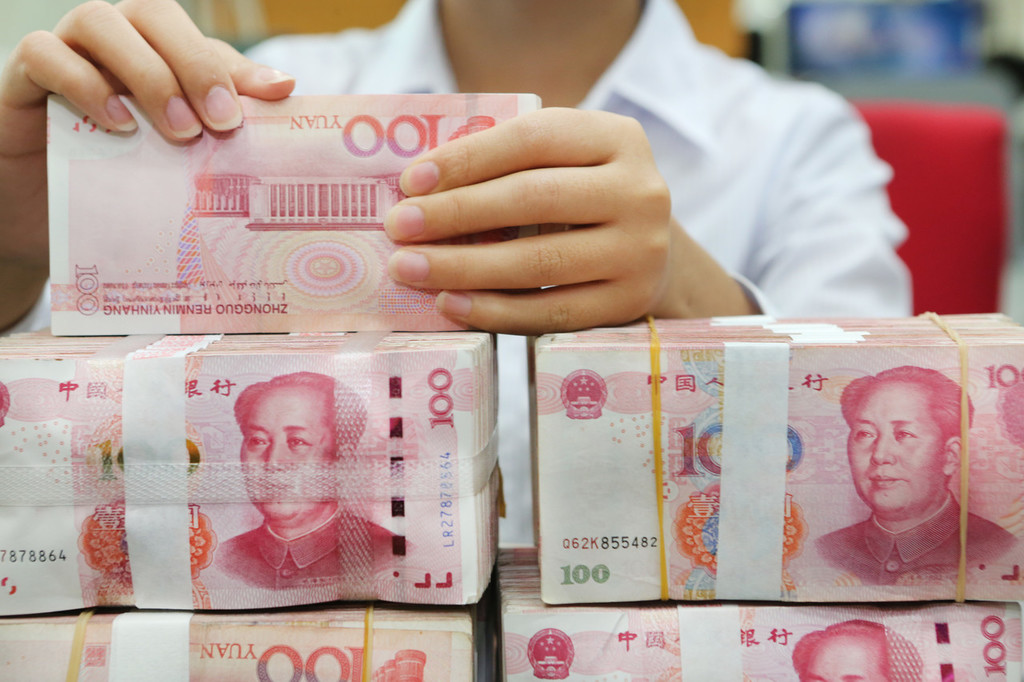
China did not immediately use the latest United States interest rate cut as an opportunity to ease domestic monetary policy as the current rate level is adequate and liquidity ample following a recent injection of funds, analysts said.
But they expect the People's Bank of China, the central bank, to support the market in other ways by possibly lowering the base interest rate of banks' new loans soon to reduce costs for corporate clients.
"For China, prudent monetary policy is basically appropriate at present as indicated by major financial data in August, such as improved aggregate social financing and the growth rate of the broad money supply," said Sheng Songcheng, former head of the PBOC statistics and analysis department.
The latest cut of banks' reserve requirement ratio, which took effect earlier this week, freed up about 800 billion yuan ($112.75 billion) and is expected to ensure liquidity remains at a reasonable level.
The move can also effectively lower financing costs of financial institutions and reduce the lending rate to corporate borrowers, both of which help companies endure external and internal headwinds, Sheng said.
A major monetary policy target this year is to guide a lower lending rate to corporate borrowers and grant more credit support for production and investment. The newly reformed loan prime rate, or LPR, mechanism will help achieve this goal, according to a CITIC Securities research note.
"The money market interest rate is already at a relatively low level, which is one of the reasons for the PBOC not to follow the step of the US Fed to cut interest rates," said Ming Ming, an economist at the brokerage.
Another mission for the PBOC, Ming said, is to drive the interest rate of corporate loans closer to the fund rate that banks borrow from each other, also known as the interbank lending rate. That means the one-year LPR this month may be at a lower level than in August.
Similar views were made by PBOC Vice-Governor Liu Guoqiang last month. According to Liu, the money market interest rate has decreased to a reasonable level in line with global monetary policy trends.
The PBOC refreshes the LPR, the new benchmark interest rate for bank lending, on the 20th of each month, based on the quotations of 18 banks. The one-year LPR in August was 4.25 percent, which was the first post after the country's market-oriented reform of its interest rate mechanism.
The market was not surprised by the US Federal Reserve's quarter-point interest rate cut on Wednesday, the second cut in two months, to ease the disruption of the continuing US-China trade dispute and offset the weight of a global economic slowdown.
The Fed suggested that it may be open to a third rate cut this year, possibly in October or December.
Hours after the Fed cut, the Organization for Economic Cooperation and Development downgraded the economic forecasts for almost all of the countries it monitors and cut its global growth projection for 2019 to 2.9 percent from 3.2 percent, the weakest level since the financial crisis a decade ago.
Kamal Khan, chief US editor at Investing.com in New York, said Fed Chairman Jerome Powell had the difficult task of explaining the need for the rate cut when the Fed doesn't foresee a recession.
"The quarter-point cut won't be enough to derail a slowdown and more concerns about a US recession if trade relations between the US and China start to sour again," Khan said. "But it should help the economic data look even better in the near term."
To maintain a strong economy, full employment and stable prices, the Fed pumped $75 billion into the financial system on Monday and Tuesday, the first such action in about 10 years, to alleviate a sudden shortage of cash.
The Fed's interest rate cut will increase the attractiveness of Chinese assets in financial markets as the interest margin between the 10-year sovereign bond in China and the US was the largest since 2015, said Zhang Wenlang, an economist at Everbright Securities.
Higher interest rates in China will encourage more capital inflows from overseas, Zhang said.
From ChinaDaily



 电话:+860512-57886027
电话:+860512-57886027 邮箱:
邮箱: 地址: Room 1902, XinDuYinZuo, No. 177, Changjiang Middle Road, Kunshan, Jiangsu
地址: Room 1902, XinDuYinZuo, No. 177, Changjiang Middle Road, Kunshan, Jiangsu